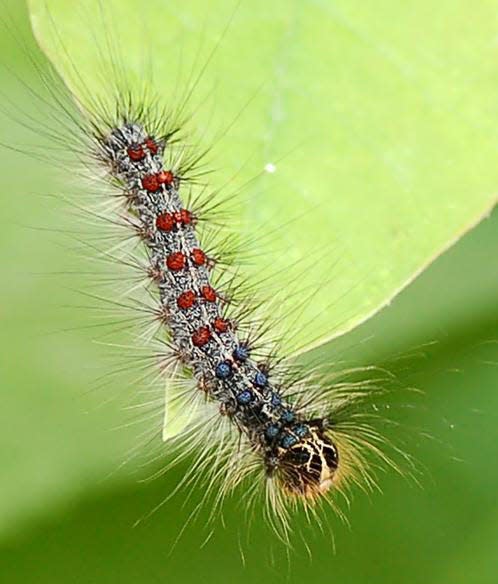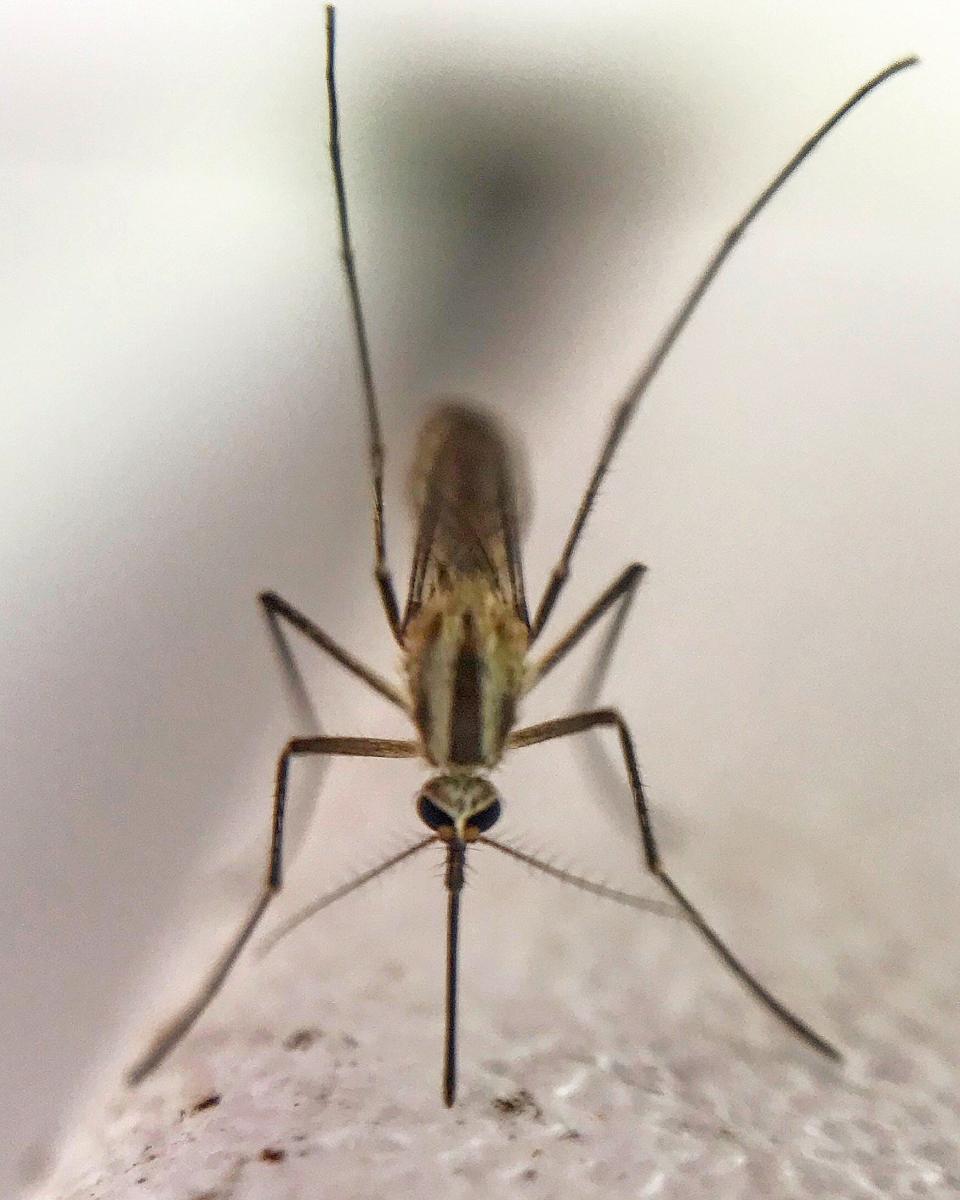Spring brings more than pretty flowers. It's time again to wage war on insects.
Spring is here. So as your backyard begins flowering again, it's time to hunt for insects to get rid of unwanted pests.
Here are some of the insects you should watch out for in Delaware.
Spongy moth
The spongy moth (formerly known as the gypsy moth) lays egg masses on the trunks and branches of several types of trees, especially common pine and oak trees.
They are more prevalent in drier conditions and sandier soils, namely in areas of Sussex County. Many states in the Northeast, including Delaware, are under federal quarantine to help prevent the spread of the pest to other areas of the country.
Quarantine essentially means that before moving out of a quarantined area, an individual has to check their outdoor belongings to make sure the insect isn't introduced to a new ecosystem.
Eggs will start to hatch by late spring, which means it's best to tackle the problem sooner rather than later. Look for egg masses attached to trees with a yellow-brown color that's firm to the touch. These masses can be scraped off the tree into soapy water either by homeowners or professional arborists.

They feed on the leaves of oaks and some other hardwood trees a bit later in May and June and can harm the tree, especially if they are present for more than one year.
Spotted lanternflies
Spotted lanternflies are still a problem, and because they usually die off in colder weather, the mild winter may have led to a population boom by the end of spring. The red-winged pest can be found on the bark of common willow and walnut trees, which they feed on. Luckily, the protocol with lanternflies is easy: If you see it, squish it.
Emerald ash borer
The emerald ash borer is a major pest for ash trees. While these trees aren't too popular in Delaware, the insect can still cause heavy damage in a relatively short amount of time. The small green beetles originated in Asia but have been detected all across Delaware since 2016. It's difficult to prevent these pests. Homeowners need to recognize if they have an ash tree in their yard and should call an arborist to inject the tree to protect it.
Asian longhorned beetle
The Asian longhorned beetle is another exotic invasive species to look out for this spring. The black-and-blue beetle feeds on several types of trees, but especially maples, one of the most common tree species in Delaware.
Mosquitoes

Delaware has not seen an outbreak of the mosquito-borne West Nile virus in recent years, but the pesky insects are still a nuisance.
The West Nile virus is described as a summer flu spread by mosquito bites and leads to symptoms such as a fever, headache, body aches, vomiting, skin rash and fatigue.
Delaware's Department of Natural Resouces and Environmental Control has started its mosquito control services. The process involves the spraying of natural insecticide in typical mosquito habitats such as wetland areas, ponds and marshes.
DNREC also advises individuals to take care of any standing water on their property to lessen the mosquito activity in their area.
Dumping water from the liners of flower pots, cleaning gutters and abandoned swimming pools, checking tarps over vehicles or boats and turning over any surface like a wheelbarrow or children's toy that might collect water are all ways to decrease mosquito activity.
This article originally appeared on Delaware News Journal: Spotted lanternflies and more: Insects to watch out for this spring

